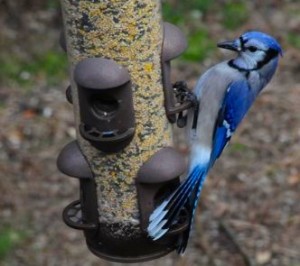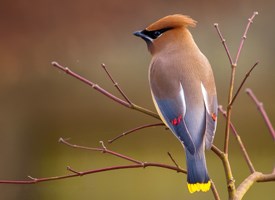Week 15 – 16 October 2016:
To Feed Or Not To Feed
In some parts of the world, people are able to add substantially to the lives of birds by maintaining birdfeeders. For a modest outlay for lumber, nails and seed we can contribute to the nutrition of granivorous birds in our yards. For a similarly-small sum spent on glassware and sugar, we might attract nectar-feeding birds. The British Trust for Ornithology is involved with bird feeding through its Garden Bird Feeding Survey (www.bto.org/volunteer-surveys/gbfs), as is the Cornell Lab of Ornithology in the U.S. through its Project FeederWatch (feederwatch.org).
Feeding birds is not a one-way gift. Feathered friends reward our generosity by living their lives a little bit closer to ours. Moving from the individual to the wider community, supporting wild birds helps to establish and maintain important links between citizens and nature.
That is not to say that feeding birds is necessarily always positive. Amoung the possible risks are increased disease transmission among birds crowding around feeders, added attention by predators, and the creation of dependency on our generosity. Could it be that feeders also result in increased bird mortality through collisions with the windows of residential buildings?
Justine Kummer, an M.Sc. student at the University of Alberta, and her supervisor Erin Bayne, investigated the possibility that a birdfeeder on a residential property could increase the likelihood of fatal collisions of birds with windows. Their study was conducted in 2014 and 2015 at 43 homes in and around the city of Edmonton in central Alberta, Canada. Some studies of bird biology are more interesting to the public than others, and the study of Kummer and Bayne attracted considerable media attention. The Canadian Broadcasting Corporation was particularly helpful in recruiting homeowners in the Edmonton area to the study. Birdfeeders were erected and stocked with seed, and collisions at windows close to feeders were compared to incidents at windows with no feeders. Homeowners were asked to make daily checks for evidence of collisions by birds.
Over the year-long study, 145 birds collided with windows. Of these, 89 survived and the outcome for another 45 was unknown; only 11 fatalities were reported. Seedeaters like House Sparrows, Blue Jays and Dark-eyed Juncos were among the birds involved in collisions. Curiously, birds not expected to eat grain sometimes struck windows, including Cedar Waxwings and American Robins. This was, presumably, not a consequence of birdfeeders.
The presence of birdfeeders roughly doubled the number of collisions with windows. However the story isn’t as simple as that. Variability in the data was considerable. Far fewer birds struck windows in winter than in any other season, even though non-migrants made greater use of feeders in winter. Of the 43 homes in the study, owners at 18 did not report even a single bird collision, but four homeowners reported a combined 76 strikes, and a single window was responsible for more than 11 collisions. “This suggests that the effects of a bird feeder are dependent on the house and the window,” wrote Kummer and Bayne. “Overall, some houses have a much higher risk than others, suggesting that impacts of feeding birds may be context dependent.”
Having successfully defended her M.Sc. thesis, Kummer is now considering the future. She wrote to say that “I’m very interested in science outreach and education, and science communication – which was a large part of my overall project.” Please join me in wishing her great success in that field.
Kummer, J. A. and E. M. Bayne. 2015. Bird feeders and their effects on bird-window collisions at residential houses. Avian Conservation and Ecology 10(2):6.
Photo credits: Blue Jay at a feeder – www.uniquebirdhouseboutique.com; Cedar Waxwing – www.allaboutbirds.org



